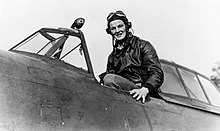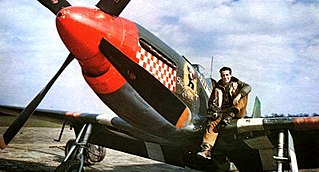
Dominic Salvatore "Don" Gentile, was a World War II RAF and USAAF pilot who achieved fame as he came close to surpassing Eddie Rickenbacker's World War I record of 26 downed aircraft. He later served in the post-war U.S. Air Force.
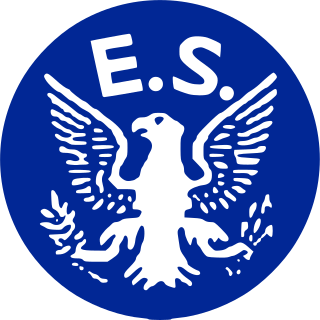
The Eagle Squadrons were three fighter squadrons of the Royal Air Force (RAF) formed with volunteer pilots from the United States during the early days of World War II, prior to America's entry into the war in December 1941.

The VIII Fighter Command was a United States Army Air Forces unit of command above the wings and below the numbered air force. Its primary mission was command of fighter operations within the Eighth Air Force. In the World War II European Theater, its primary mission was air superiority. Its last assignment was with the United States Air Forces in Europe at RAF Honington,

Duane Willard Beeson was an American fighter pilot and flying ace of World War II. He scored 22.08 victories, including 17.3 air-to-air kills, 12 of which were scored in the P-47C/D Thunderbolt, and 5.3 of which were scored in the P-51-B Mustang. Beeson was one of ten United States Army Air Forces pilots who became an ace in two different types of fighter aircraft.

The 336th Fighter Squadron, nicknamed the Rocketeers, is a United States Air Force unit. It is assigned to the 4th Operations Group and stationed at Seymour Johnson Air Force Base, North Carolina.
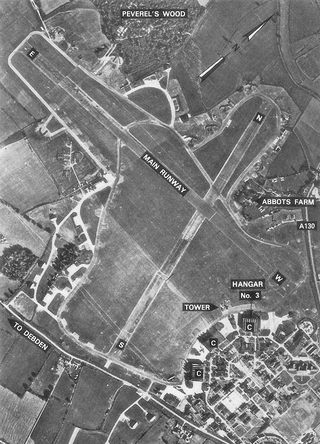
Royal Air Force Debden or more simply RAF Debden is a former Royal Air Force station located 3 miles (4.8 km) southeast of Saffron Walden and approximately 1 mile (1.6 km) north of the village of Debden in north Essex, England

The 357th Fighter Group was an air combat unit of the United States Army Air Forces during the Second World War. The 357th operated P-51 Mustang aircraft as part of the U.S. Eighth Air Force and its members were known unofficially as the Yoxford Boys after the village of Yoxford near their base in the UK. Its victory totals in air-to-air combat are the most of any P-51 group in the Eighth Air Force and third among all groups fighting in Europe.
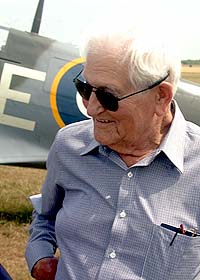
Donald James Matthew Blakeslee was an officer in the United States Air Force, whose aviation career began as a pilot in the Royal Canadian Air Force flying Spitfire fighter aircraft during World War II. He then became a member of the Royal Air Force Eagle Squadrons, before transferring to the United States Army Air Forces in 1942. He flew more combat missions against the Luftwaffe than any other American fighter pilot, and by the end of the war was a flying ace credited with 15.5 aerial victories.

The 334th Fighter Squadron is a United States Air Force unit. It is assigned to the 4th Operations Group and stationed at Seymour Johnson Air Force Base, North Carolina.
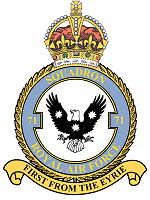
No. 71 Squadron was a Royal Air Force aircraft squadron. The number has been used three times: once by the Royal Flying Corps for an Australian Flying Corps squadron; in the Second World War as the first of three Eagle Squadrons; and post-war as a fighter-bomber unit under the command of Royal Air Force Germany.
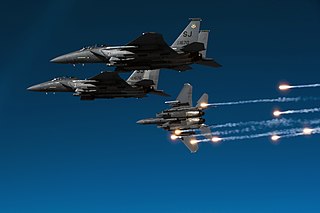
The 4th Operations Group is the flying component of the 4th Fighter Wing, assigned to the United States Air Force Air Combat Command. The group is stationed at Seymour Johnson Air Force Base, North Carolina.
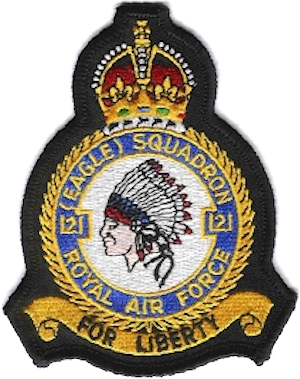
No. 121 Squadron was a Royal Air Force (RAF) aircraft squadron that during the Second World War was one of the three Eagle Squadrons manned by American volunteers. There is a Royal Air Force Air Cadets squadron, based in Nuneaton, which shares its number.
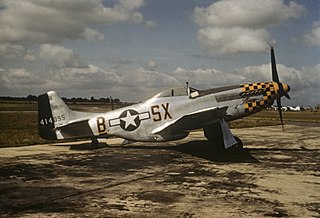
The 353rd Fighter Group, nicknamed the Slybird Group, was a fighter group of the United States Army Air Forces during World War II. The group was stationed in England and comprised the 350th, 351st, and 352nd Fighter Squadrons. It pioneered the P-47 dive-bombing and ground attack technique adopted by both Eighth and Ninth Air Forces. The group flew 447 combat missions and claimed 330 air and 414 ground aircraft destroyed. Group markings were black, yellow, black, yellow spinners, with a 48-inch black and yellow checker band around the cowling to the end of the exhaust stubs.

The 56th Operations Group is a unit of the United States Air Force, and the flying component of the 56th Fighter Wing.

Vermont Garrison was a career officer in the United States Air Force, and a flying ace credited with 17.33 victories in aerial combat. He was one of only seven Americans to achieve ace status during World War II, then again against jet fighter opposition during the Korean War. In 1966, Garrison participated in his third war, as vice commander of the 8th Tactical Fighter Wing, and flew a full tour of bombing and fighter missions over North Vietnam.

The 352nd Fighter Group was a unit of the Eighth Air Force that was located in the European Theater of Operations during World War II. The unit served as bomber escort, counter-air patrols, and attacking ground targets. It initially flew P-47 Thunderbolt aircraft before converting to P-51 Mustang in April 1944. The group was located at RAF Bodney in England for the majority of its service and were nicknamed the Blue-nosed Bastards of Bodney due to the distinctive blue of the nose and upper cowl of the P-51 Mustangs of the group.
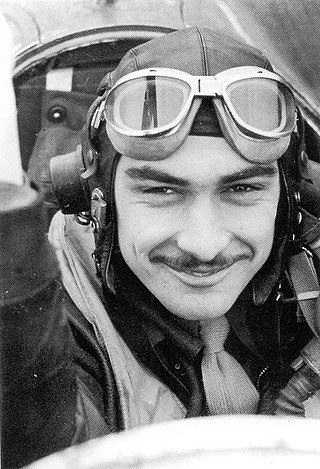
James Alexander Goodson was a United States Army Air Force fighter ace who was credited with shooting down fifteen aircraft and destroying another fifteen on the ground during World War II.

Glenn Todd Eagleston was a career officer in the United States Air Force and the leading ace of Ninth Air Force in Europe in World War II. Eagleston was credited with 18 1/2 victories, two probable victories, and seven damaged German aircraft. He also destroyed at least five enemy aircraft on the ground, while flying P-51 Mustangs with the 354th Fighter Group.

The 4th Fighter Wing is a United States Air Force unit assigned to the Air Combat Command's Ninth Air Force. It is stationed at Seymour Johnson Air Force Base, North Carolina, where it is also the host unit.

Nicholas Megura was a United States Air Force lieutenant colonel. He served in the United States Army Air Forces as a fighter pilot during World War II, and he became an ace with 11.83 aerial victories before he himself was nearly shot down. Megura was able to crash-land his aircraft in neutral Sweden, but was not allowed to fly any more combat missions during the war due to the nature of his release from Sweden.



